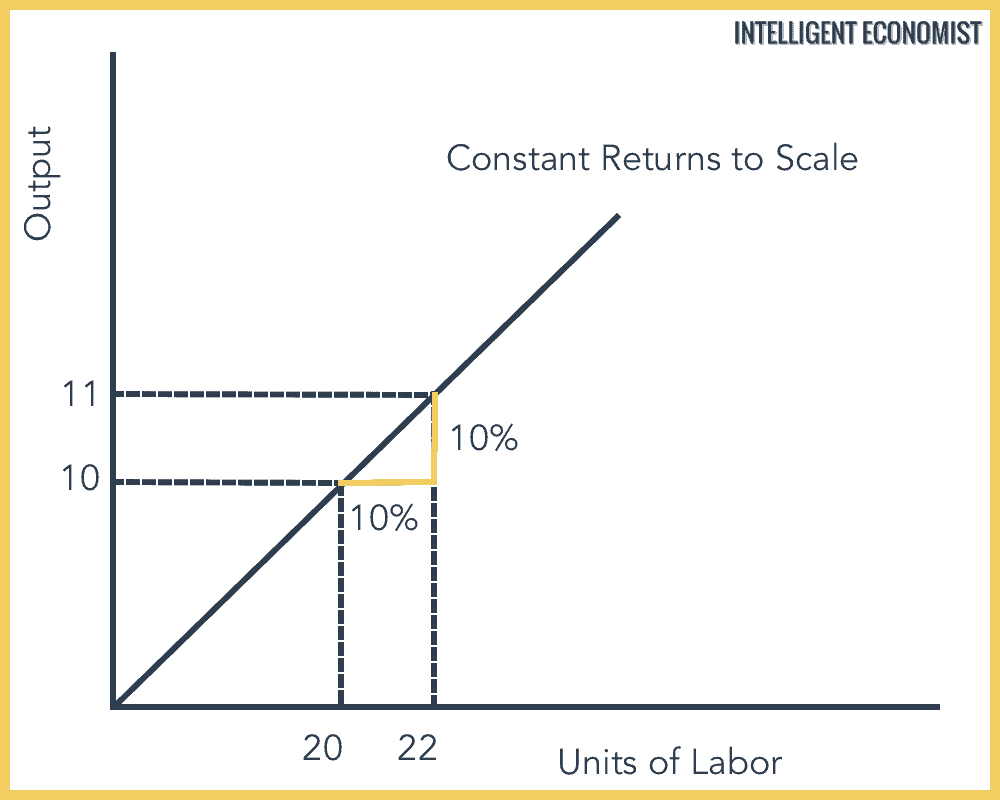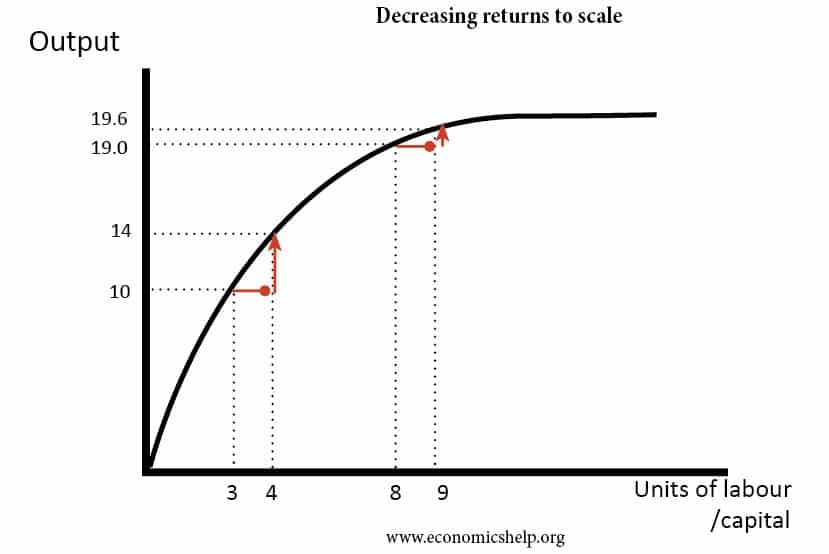The Term Constant Returns to Scale Describes a Situation Where
A larger-scale firm can produce at a lower cost than a smaller-scale firm. Expanding all inputs does not change the average cost of production.

Constant Returns To Scale Intelligent Economist
LasT year iT produced 7000 can openers and sold eachone for 6.

. Expanding all inputs does not change the average cost of production. A larger-scale firm can produce at a lower cost than a smaller-scale firm. When the level of output increases the average cost decreases as economies of scale are referred to.
A larger-scale firm can produce at a. The quantity of output rises and the average cost of production falls. The long-run average cost curve depicts the lowest potential average cost of production while allowing all production inputs to vary allowing the firm to select its production technique.
Expanding all inputs changes the average cost of production. Question 5 3 out of 3 points constant returns to. Expanding all inputs does not change the average cost of production.
The term constant returns to scale describes a situation whereA. Expanding all inputs changes the average cost of production. The quantity of output rises and the average cost of production falls.
Expanding all inputs does not change the average cost of production. The term constant returns to scale describes a situation where A. Question 5 3 out of 3 points Constant returns to scale describes a situation where.
Question 1 4 out of 4 points Constant returns to scale describes a situation where. The term is used to describe the additional cost of producing one more unit A from ABM 240 at University of New Hampshire. O the quantity of output rises and the average cost of production falls.
Expanding all inputs changes the average cost of production. In microeconomics the term _____ is synonymous with economies of scale. Question 14 5 pts The term constant returns to scale describes a situation where expanding all inputs does not change the average cost of production.
The quantity of output rises and the average cost of production falls. The term constant returns to scale describes a situation where expanding all inputs does not change the average cost of production. __________ include all spending on labor machinery tools and suppliespurchased From other frms.
A larger-scale firm can produce at a lower cost than a smaller-scale firm. The term constant returns to scale describes a situation where A. Increasing Returns to scale The term constant returns to scale describes a situation where expanding all inputs does not change the average cost of production.
The term constant returns to scale describes a situation where expanding all inputs does not change the average cost of production. Expanding all inputs changes the average cost of production. _____________ is calculated by taking the quantity of everything that is sold and multiplying it by the sale price.
The term constant returns to scale describes a situation in which average cost does not change as production grows. Which Term Describes A Situation Where The Quantity Of Output Rises But The Average Cost Of Production Fails. The term constant returns to scale describes a situation where.
Asked Feb 7 2020 in Economics by douglong424. Expanding all inputs does not change the average cost of production. Expanding all inputs changes the average cost of production by a lower percentage.
Expanding all inputs does not change the average cost of production. The term ____ describes a situation where the quantity of output rises but the average cost of production falls. Expanding all inputs changes the average cost of production.
1 Answer to The term constant returns to scale describes a situation where a. Question 1 4 out of 4 points Constant returns to scale describes a situation where. Expanding inputs by 15 yields an average output of 15.
Expanding all inputs changes the average cost of production by a lower percentage. A larger-scale firm can produce at a lower cost than a smaller-scale firm. The term constant returns to scale describes a situation where A.
The term constant returns to scale describes a situation where a. Expanding all inputs does not change the average cost of production. Question 14 5 pts The term constant returns to scale describes a situation where expanding all inputs does not change the average cost of production.
Expanding inputs by 15 yields an average output of 15. A larger-scale firm can produce at a lower cost than a smaller-scale firm. Constant returns to scale describes a situation where.
Expanding all inputs does not change the average cost of production. Expanding all inputs does not change the. A larger-scale firm can produce at a lower cost than a smaller-scale firm.
A larger-scale firm can produce at a lower cost than a smaller- scale firm. A larger-scale firm can produce at a lower cost than a smaller-scale firm. Expanding all inputs changes the average cost of production.
The quantity of output rises and the average cost of production falls. Increasing returns to scale. Produces and sells kiTchen wares.
A larger-scale firm can produce at a lower cost than a smaller-scale firm. In constant returns to scale the average cost does not change as output increases so the cost is constant.

Constant Returns To Scale Intelligent Economist


Comments
Post a Comment